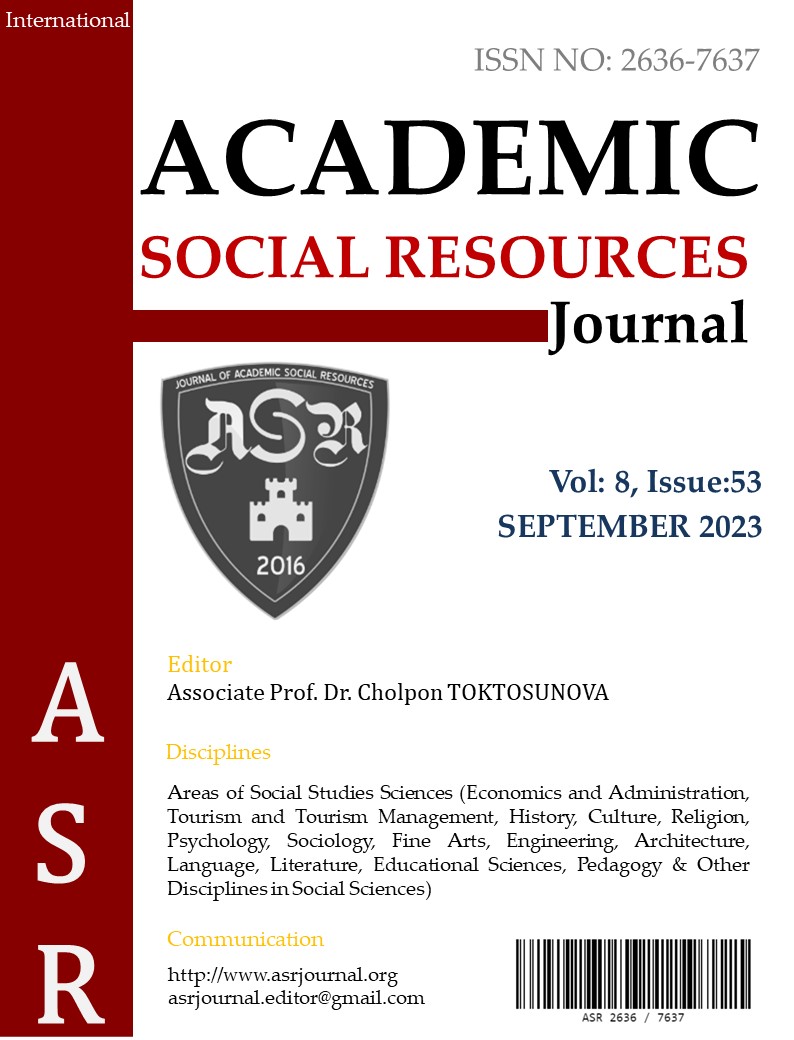Author :
Abstract
Yaşamın en temel ihtiyaçlarının karşılanması amacıyla yapılan el sanatları, kullanılan malzeme, teknik, kullanım alanları ve yapıldıkları yöreleri göz önünde bulundurulduğunda oldukça geniş bir ürün çeşitliliği sunar. İhtiyaçlar ile şekillenen el sanatı ürünleri, yapıldığı dönemin özelliklerini gösteren kültür değerleridir. Bu değerler zamanla ihtiyaçların ötesine geçerek estetik zevklerin de dâhil olduğu bir değişime uğrar. Tarih içerisinde her dönemin kendine özgü yaşam koşulları, zevkleri, moda anlayışı ve dolayısı ile kullanım alanlarında da değişikliklere sebep olmuştur. Kültürel ve tarihsel değerlerin nesiller arası geçişine öncülük yapan el sanatlarından olan dantellere de bu değişim yansımıştır. Tığ örgü ile yapılan danteller, önceleri örtü ya da havlu, yatak takımları gibi tekstillerin kenar süsü olarak kullanılmaktayken, bir dönem neredeyse hiç kullanılmamış ve sandıklara kaldırılmıştır. Bu çalışma dantel örgü ile yapılmış ürünlerin örtü olarak kullanımına alternatif olan farklı kullanım alanları ile dekoratif ürünlere dönüştürülmüş ürün örneklerinden oluşmaktadır. Tarama tekniği kullanılarak yapılan çalışma, el sanatlarının yok olmasının önüne geçmesi, var olan dantellerin yeni alternatif fikir ve tasarımlar ile farklı kullanım alanlarına dönüşmesini sağlayarak el sanatlarının değerlendirilmesine katkı sağlaması anlamında önemlidir. Bu dönüşüm sayesinde dantel örgüyle yapılan yeni tasarım fikirlerinin, dantel ürünlere olan ilgi ve talebi arttırması, dantelin yeniden üretilmesine yardımcı olması amacıyla yapılmıştır. Çalışmada dantel örgünün iç mekânlarda farklı kullanım alanlarını yansıtan kırlent, lamba, duvar dekorasyon ürünleri, tablo, pano, mumluk ve düş kapanı olarak kullanılan 25 dekoratif ürün örneği yansıtılmıştır.
Keywords
Abstract
Handicrafts made to meet the most basic needs of life offer a wide variety of products, considering the materials used, techniques, areas of use and the regions where they are made. Handicraft products shaped by needs are cultural values that show the characteristics of the period in which they were made. These values go beyond needs over time and undergo a change, including aesthetic pleasures. Throughout history, each period has caused changes in its unique living conditions, tastes, fashion sense and therefore its usage areas. This change is also reflected in lace, which is one of the handicrafts that pioneer the transfer of cultural and historical values between generations. While lace made with crochet knitting was previously used as a cover or as a trim on textiles such as towels and bedding, for a while it was almost never used and was put away in chests. This study consists of product samples that have been transformed into decorative products with different usage areas that are alternatives to the use of lace knitted products as covers. The work done using the scanning technique is important in terms of preventing the extinction of handicrafts and contributing to the evaluation of handicrafts by enabling the transformation of existing lace into different areas of use with new alternative ideas and designs. Thanks to this transformation, new design ideas made with lace knitting were aimed to increase the interest and demand for lace products and to help the reproduction of lace. In the study, 25 examples of decorative products used as throw pillows, lamps, wall decoration products, paintings, panels, candle holders and dream catchers, reflecting the different usage areas of lace knitting in interior spaces, were presented. candle holders and dream catchers, reflecting the different usage areas of lace knitting in interior spaces, were presented.





